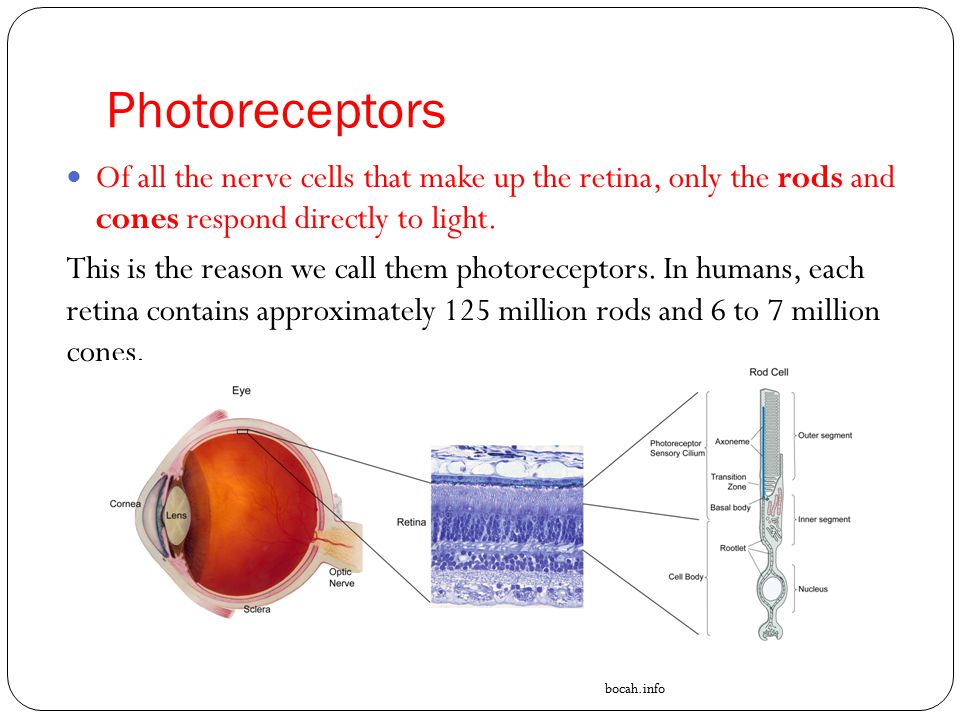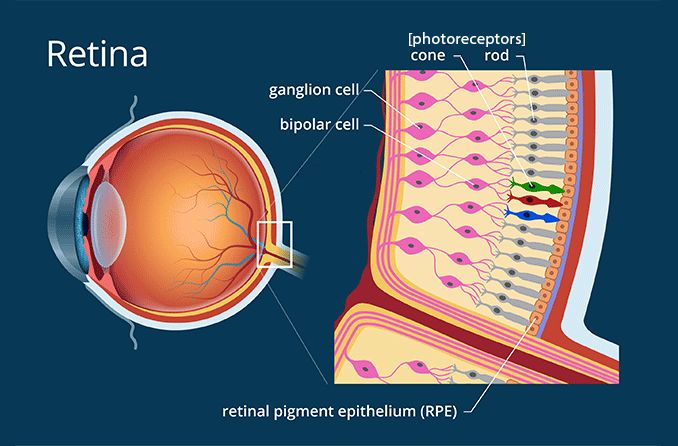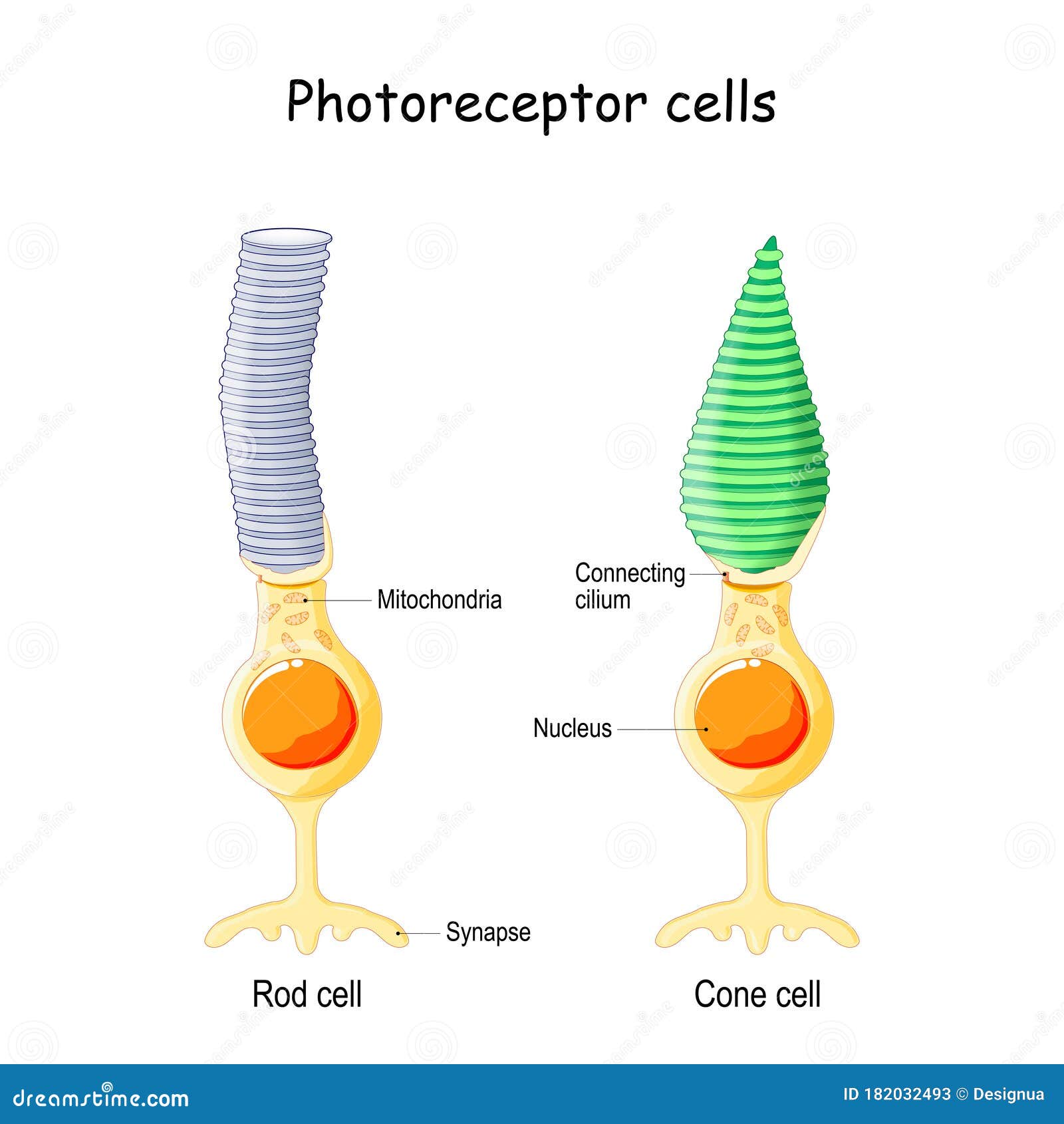Your What does photoreceptor cell mean images are ready in this website. What does photoreceptor cell mean are a topic that is being searched for and liked by netizens now. You can Download the What does photoreceptor cell mean files here. Download all free vectors.
If you’re looking for what does photoreceptor cell mean images information linked to the what does photoreceptor cell mean topic, you have pay a visit to the ideal blog. Our site always gives you suggestions for seeking the highest quality video and image content, please kindly hunt and locate more informative video articles and images that fit your interests.
What Does Photoreceptor Cell Mean. Photoreceptor degeneration is an important pathological process in degenerative retinal diseases such as age-related macular degeneration and retinitis pigmentosa12 Intense. Photoreceptors are used in photocopy and facsimile machines cameras and solar cells. Structure of photoreceptor cell. A photoreceptor cell is a specialized type of neuron found in the retina that is capable of phototransduction.
 Schematic Representation Of The Retina And Light Sensitive Download Scientific Diagram From researchgate.net
Schematic Representation Of The Retina And Light Sensitive Download Scientific Diagram From researchgate.net
Ciliary photoreceptor cells use OPSINS that activate a PHOSPHODIESTERASE phosphodiesterase cascade. Simon Makin Scientific American 23 Apr. Amy Dockser Marcus WSJ 24 May 2021 The retinas photoreceptor cells use light-sensitive proteins called opsins to convert light entering the eye into electrical signals. Photoreceptors are special cells in the eyes retina that are responsible for converting light into signals that are sent to the brain. Signals from the photoreceptors are sent through the optic nerve to the brain for processing. Structure of photoreceptor cell.
Photoreceptor cell a photosensitive cell in the retina of vertebrate eyes Simple eye in invertebrates Ocellus photoreceptor organ simple eye of invertebrates often composed of a few sensory cells and a single lens.
Absorb light in the photoreceptor cell. Structure and function of. Photoreceptor cells in the retina sense light signaling the brain but only in the presence of retinal molecules within the cells. The tight packing is needed to achieve a high photopigment. A photoreceptor cell is a specialized type of neuroepithelial cell found in the retina that is capable of visual phototransduction. My DashboardMy EducationFind an Ophthalmologist.
 Source: slideplayer.com
Source: slideplayer.com
Photoreceptors are specialized neurons found in the retina that convert light into electrical signals that stimulate physiological processes. They are responsible for dim-light vision. Simon Makin Scientific American 23 Apr. Photoreceptor cells are indicated by green pigment screen by black granules and optics by blue. The well-known retinal photoreceptors in all vertebrates are the rods and cones.
 Source: britannica.com
Source: britannica.com
What does photoreceptor mean. Specialized cells that detect and transduce light. Photoreceptor cell a photosensitive cell in the retina of vertebrate eyes Simple eye in invertebrates Ocellus photoreceptor organ simple eye of invertebrates often composed of a few sensory cells and a single lens. Photoreceptor cells in the retina sense light signaling the brain but only in the presence of retinal molecules within the cells. Amy Dockser Marcus WSJ 24 May 2021 The retinas photoreceptor cells use light-sensitive proteins called opsins to convert light entering the eye into electrical signals.
 Source: allaboutvision.com
Source: allaboutvision.com
The inner portion of a retinal rod or a cone photoreceptor cell situated between the PHOTORECEPTOR CONNECTING CILIUM and the synapse with the adjacent neurons RETINAL BIPOLAR CELLS. Photoreceptor cells are indicated by green pigment screen by black granules and optics by blue. Photoreceptors are specialized neurons found in the retina that convert light into electrical signals that stimulate physiological processes. Cells located on the retina that are capable of converting light into visual information. Shorts Biochemist Prof Gang Han of the University of.
 Source: researchgate.net
Source: researchgate.net
The tight packing is needed to achieve a high photopigment. They are responsible for dim-light vision. The well-known retinal photoreceptors in all vertebrates are the rods and cones. Photoreceptors are specialized neurons found in the retina that convert light into electrical signals that stimulate physiological processes. Photoreceptor cells are indicated by green pigment screen by black granules and optics by blue.
 Source: dreamstime.com
Source: dreamstime.com
The tight packing is needed to achieve a high photopigment. B a common type of directional photoreceptor with rhabdomeric microvilli. Photoreceptors are used in photocopy and facsimile machines cameras and solar cells. Shorts Biochemist Prof Gang Han of the University of. An electronic device that converts light energy into electrical signals.
 Source: wikiwand.com
Source: wikiwand.com
My DashboardMy EducationFind an Ophthalmologist. The well-known retinal photoreceptors in all vertebrates are the rods and cones. The active glucose metabolism in turn generates much carbon dioxide and water. The great biological importance of photoreceptors is that they convert light into signals that can stimulate biological processes. Cells located on the retina that are capable of converting light into visual information.
 Source: biologymad.com
Source: biologymad.com
The tight packing is needed to achieve a high photopigment. Photoreceptors are specialized neurons that comprise the light-sensing cells of the retina an extension of the central nervous system located at the back of the eye. This high metabolic activity is associated with high oxygen and glucose demands. Photoreceptors are used in photocopy and facsimile machines cameras and solar cells. They are classified into two types based on their light reception structure the ciliary photoreceptors and the rhabdomeric photoreceptors with MICROVILLI.
 Source: slideplayer.com
Source: slideplayer.com
The well-known retinal photoreceptors in all vertebrates are the rods and cones. Their distinguishing feature is the presence of large amounts of tightly packed membrane that contains the photopigment rhodopsin or a related molecule. Photoreceptor cells are indicated by green pigment screen by black granules and optics by blue. B a common type of directional photoreceptor with rhabdomeric microvilli. There are currently three known types of photoreceptor cells in mammalian eyes.
 Source: sciencedirect.com
Source: sciencedirect.com
Photoreceptor cells display the highest rate of oxidative metabolism of all cells in the body. Structure and function of photoreceptors. The active glucose metabolism in turn generates much carbon dioxide and water. They are responsible for dim-light vision. Rods cones and intrinsically photosensitive retinal ganglion cells.
 Source: kenhub.com
Source: kenhub.com
Structure and function of photoreceptors. Photoreceptors are special cells in the eyes retina that are responsible for converting light into signals that are sent to the brain. What are photoreceptor Cells. Via transcellular transport Müller cells redistribute metabolic waste into the blood and vitreous. Ciliary photoreceptor cells use OPSINS that activate a PHOSPHODIESTERASE phosphodiesterase cascade.
 Source: cell.com
Source: cell.com
Signals from the photoreceptors are sent through the optic nerve to the brain for processing. Photoreceptor cell a photosensitive cell in the retina of vertebrate eyes Simple eye in invertebrates Ocellus photoreceptor organ simple eye of invertebrates often composed of a few sensory cells and a single lens. The active glucose metabolism in turn generates much carbon dioxide and water. My DashboardMy EducationFind an Ophthalmologist. The tight packing is needed to achieve a high photopigment.
 Source: researchgate.net
Source: researchgate.net
A a single photoreceptor cell from a box-jellyfish larva with rhabdomeric microvilli and a motile cilium. Rods are extremely sensitive to light being able to detect and signal the absorption of a single photon. Specialized cells that detect and transduce light. Outer segment connecting cilium inner segment nuclear region and synaptic region. Photoreceptor cells display the highest rate of oxidative metabolism of all cells in the body.
 Source: researchgate.net
Source: researchgate.net
Rods and Cones Five structural components. Structure and function of. Rods cones and intrinsically photosensitive retinal ganglion cells. The inner portion of a retinal rod or a cone photoreceptor cell situated between the PHOTORECEPTOR CONNECTING CILIUM and the synapse with the adjacent neurons RETINAL BIPOLAR CELLS. Photoreceptors are special cells in the eyes retina that are responsible for converting light into signals that are sent to the brain.
 Source: sciencedirect.com
Source: sciencedirect.com
A a single photoreceptor cell from a box-jellyfish larva with rhabdomeric microvilli and a motile cilium. Cells located on the retina that are capable of converting light into visual information. The two classic photoreceptor cells are rods and cones each contributing information used by the visual system to form a representation of the visual world sight. Through it proteins synthesized in the inner segment are transported to. My DashboardMy EducationFind an Ophthalmologist.
 Source: researchgate.net
Source: researchgate.net
The active glucose metabolism in turn generates much carbon dioxide and water. Photoreceptors are specialized neurons found in the retina that convert light into electrical signals that stimulate physiological processes. Photoreceptor degeneration is an important pathological process in degenerative retinal diseases such as age-related macular degeneration and retinitis pigmentosa12 Intense. An electronic device that converts light energy into electrical signals. Photoreceptors are the cells in the retina that respond to light.
 Source: researchgate.net
Source: researchgate.net
Rods are extremely sensitive to light being able to detect and signal the absorption of a single photon. The bridge between the inner and the outer segments of a retinal rod or a cone photoreceptor cell. Absorb light in the photoreceptor cell. Via transcellular transport Müller cells redistribute metabolic waste into the blood and vitreous. Their distinguishing feature is the presence of large amounts of tightly packed membrane that contains the photopigment rhodopsin or a related molecule.
 Source: researchgate.net
Source: researchgate.net
The well-known retinal photoreceptors in all vertebrates are the rods and cones. The great biological importance of photoreceptors is that they convert light into signals that can stimulate biological processes. Photoreceptors are the cells in the retina that respond to light. The inner portion of a retinal rod or a cone photoreceptor cell situated between the PHOTORECEPTOR CONNECTING CILIUM and the synapse with the adjacent neurons RETINAL BIPOLAR CELLS. Through it proteins synthesized in the inner segment are transported to.

An electronic device that converts light energy into electrical signals. Rods and Cones Five structural components. Amy Dockser Marcus WSJ 24 May 2021 The retinas photoreceptor cells use light-sensitive proteins called opsins to convert light entering the eye into electrical signals. Simon Makin Scientific American 23 Apr. The great biological importance of photoreceptors is that they convert light into signals that can stimulate biological processes.
This site is an open community for users to do submittion their favorite wallpapers on the internet, all images or pictures in this website are for personal wallpaper use only, it is stricly prohibited to use this wallpaper for commercial purposes, if you are the author and find this image is shared without your permission, please kindly raise a DMCA report to Us.
If you find this site value, please support us by sharing this posts to your own social media accounts like Facebook, Instagram and so on or you can also save this blog page with the title what does photoreceptor cell mean by using Ctrl + D for devices a laptop with a Windows operating system or Command + D for laptops with an Apple operating system. If you use a smartphone, you can also use the drawer menu of the browser you are using. Whether it’s a Windows, Mac, iOS or Android operating system, you will still be able to bookmark this website.






